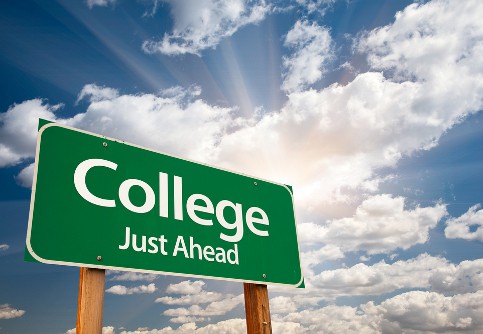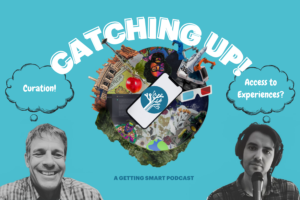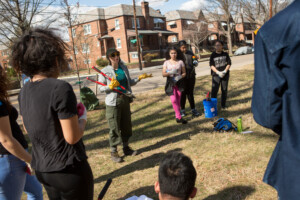5 Strategies for Leading College Readiness Programs

Braska Williams
The road to college is long, and it begins much earlier than when a student takes their SAT or ACT. For many low-income, first-generation college students of color, their roads have additional blocks that can be difficult to overcome. I have spent 11 years with the NC State University branch of the North Carolina Mathematics and Science Education Network Pre-College Program (MSEN) and eight years with a similar STEM program in Virginia, working not only to motivate students to go to college, but to get them excited about careers in STEM as well.
MSEN’s mission is to prepare underserved students at the middle and high school levels to attend a four-year college/university and for careers in STEM and education from the Raleigh-Durham area and five rural and low-income counties in North Carolina. Despite the odds, 99% of our students go to college, and 80% major in STEM or education-related fields. Here are five strategies for leading college readiness college programs:
1. Engage students year-round, for multiple years.
Our program runs throughout the school year with opportunities for students to participate during the summer, and students can enroll every year from the 6th grade until they are seniors in high school. Components include Saturday Academies (10 days a year), a math/science competition day, a peer support after-school group, a daily middle school elective class, an awards ceremony every year towards the end of the school year, and a summer program.
In your early college program, don’t interact with students once and then walk away thinking work is done. Engage with students multiple times a year, in multiple formats, for multiple years.
In our work, this has not only been a major factor in our program’s success, but has also led to lifelong friendships. Many of our students volunteer with us even through the college years and after they graduate from college and have entered the workforce. This type of interaction builds relationships with students.
2. Expose students to new ideas and experiences.
For many students, simply sitting in classrooms, getting lectured, and taking tests isn’t enough to get them eager to attend college and pursue careers. When our students come to MSEN at our Saturday Academy or Summer Scholars, we try to engage them with projects and activities that encourage critical thinking and teamwork that run the gamut across topics – from robotics to engineering to communications.
But it goes beyond exposing students to new subjects and ways of thinking. Many students have never even visited Raleigh (where the NC State MSEN program operates from), much less other major cities, museums, and – importantly – college campuses. We have taken students to visit colleges all over the country at a low cost to them in order to expose them to all the possible places they could go.
They always get to eat in an on-campus dining hall, often they get to meet college students to get a sense of what the college experience is really like and what it has to offer them, and many times, we are able to obtain tours of individual departments or receive presentations from STEM scholarship programs at the university that we’re visiting. We even took a group of middle school students to Walt Disney World to participate in their Youth Educational Series (YES) program – which they obviously really enjoyed.
3. Give students role models they can relate to.
When looking for someone to give a presentation or facilitate an activity, try to find people who are not just great at what they do, but also someone to whom students can relate. It is really difficult for a student to just believe that they can overcome whatever challenges they may have because you tell them so. It is much more powerful for them to meet others who overcame those same obstacles to achieve success so they can actually envision themselves doing the same. Since a majority of the students in my program are low-income, of color, and a first-generation college student, I prefer to find speakers and educators who have had those same experiences. We ask them to talk about those experiences, not just the topic-of-the-day.
4. Meet parents and guardians where they are.
When we switched our summer program from half a day to a full day, we saw a noticeable increase in enrollments. Working parents were unable to leave work in order to drop off and pick their children up, but once we changed our program to run from 8-5 to match their workdays, parents, who had always been willing, were finally able to let their kids participate. We also started offering seminars just for the parents of students in our program to educate them on crucial college topics such as scholarships and financial aid.
You have to recognize that, when you’re offering any kind of program for students, you’re working with the parents just as much as you are with the students, so you should take their needs into account as well when developing your program. It doesn’t do the students any good to have access to a great program if their parents can’t make it possible for them to fully participate.
Teach students to take ownership of their own education. There are many students who e-mail me directly. Together, we work together to ensure that they don’t miss our program deadlines and
5. Show students and parents that you care.
Because many public schools are large and some are impersonal, it’s important to create an environment where students sense that there is caring from all of the adults, including the leadership.
One of our parents said to me, “My children have been a in a lot of summer and year-round STEM programs, but in your program, the teachers and staff are so nice and caring.” For many of our students, they talk about this all of the time, so, they know that we care. For all people, that’s important. Once young people know that you care, everything else falls into place.
For more, check out:
- Navigating Early College and Dual Credit Alternatives
- The Role Of Advisory In Personalizing The Secondary Experience
- Inland Empire Early College Paves Pathway to Postsecondary
Braska Williams is the Program Coordinator for NC State’s NC-MSEN Pre-College Program. Follow the Friday Institute on Twitter, @FridayInstitute.






Tiffany M
This article is on point!
I would also recognize the students’ role in helping to shape the programming over time. In particular, engaging previous program completers to assess and evaluate the program's effectiveness with preparing them for college and making necessary adjustments from their direct feedback.